While Many Of The Reconstructions Leave Something To Be Desired (so Many Wings That End, Inexplicably,
While many of the reconstructions leave something to be desired (so many wings that end, inexplicably, at the wrists?!!) the mission of this exhibit - and the ultimate message - is top notch.
More Posts from Llamaslikesciencetoo and Others

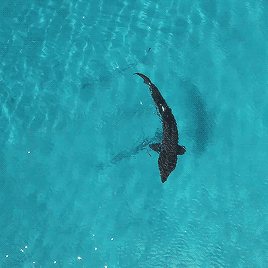
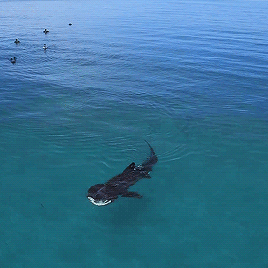
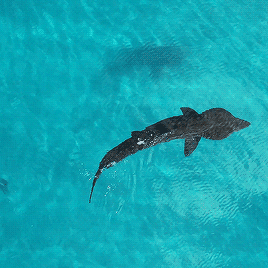

Come and take a “bite” out of nature & science, attending Explorers Society Members Event. #northmuseum #stemsisters #sharks (at North Museum of Nature & Science)

The name “hippopotamus” comes from a Greek word meaning “water horse” or “river horse.” But hippos are not related to horses at all—in fact, their closest living relatives may be pigs or whales and dolphins! (photo: Peter Csanadi)



a dream come true: ORCAS IN THEIR NATURAL HABITAT!
they examined our cruise vessel inquisitively and played in our stern wave <3 to watch these gentle giants from up close was such a beautiful once in a lifetime experience! they stayed quite a while so i could enjoy the moment and still take some neat pics. thank you for this special day, guys! stay safe.
friend of the day!
you’ve met handsome roundboy, now we introducing….
His Royal Flatness, mexican burrowing toad!

SO FLAT! i am swooning

a face of a king

perfect is he body

i trust him

I love him
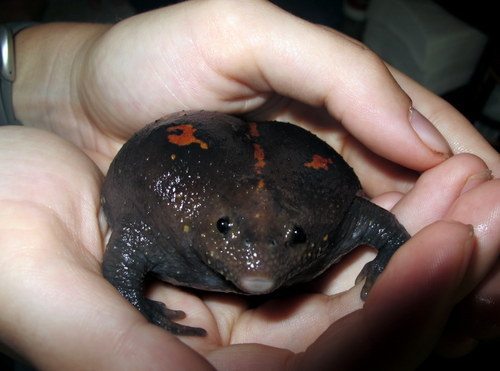
beautiful smile of toad

he know you love him too!
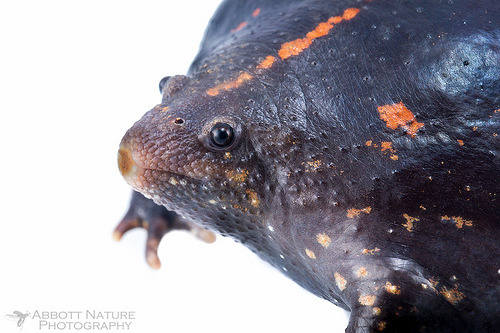
in he come for a kiss!

thank you goodbye!!









One animal’s trash is a vampire squid’s dinner! From a larvacean into the marine snow, a vampire squid meal means it’s time to boogie!
This footage is courtesy of our partners at the Monterey Bay Aquarium Research Institute (MBARI).
Their discovery of the vampire squid’s diet was an amazing moment—read all about it in here!
SeaWorld Can Extend Tilikum's Legacy Beyond the Show Pool
Monday, March 14, 2016
http://voiceoftheorcas.blogspot.com/2016/03/seaworld-can-extend-tilikums-legacy.html
To Whom It May Concern:
Myself, and the other members of VOTO, Samantha Berg, John Jett, and Carol Ray, have been informed that Tilikum, a SeaWorld killer whale in Orlando, is near death. We are saddened by this announcement, although it is not unexpected.
Tilikum has developed an antibiotic resistant bacterial infection of the lungs, with pneumonia being the leading reported cause of captive killer whale mortality. Efforts to treat Tilikum have failed due to decades of antibiotic and antifungal therapy, medications that three-of-us at VOTO have fed him, and medications he was on in 2010 when he killed Dawn Brancheau, as reported by
APHIS, here
Tilikum has been getting fed antibiotics consistently for at least two decades, primarily because of his badly damaged teeth, including open bore holes that must be flushed with antiseptic solution 2-3 times daily. These bore holes can lead to fish particles, roe, and other debris getting into the jaw and eventually into his blood stream, causing chronic low grade infection(s), and able to seed various organs, including the lungs. The end result is that, now, Tilikum is filled with bacteria that are resistant to powerful and broad spectrum medications that SeaWorld is dosing him with.
Tilikum is, at this time, likely suffering from pulmonary edema, or excess fluid in his lungs. When the surface area of his alveoli diminishes sufficiently, he will suffocate in a stretcher, at SeaWorld. In a last ditch effort to obtain air to oxygenate his tissues, he will likely thrash in the stretcher, and go through a period of “death throes,” prior to finally passing. This is a particularly dangerous time for the animal care and training staff on hand.
A crane is reportedly standing by, possibly to recover his body if he should pass. This information is unconfirmed, but it does correspond with SeaWorld’s recent announcements seen in this video:
Many citizens, including some in the scientific community, are hopeful that SeaWorld will dedicate Tilikum’s cadaver to science. This gesture would advance our understanding of the impact of captivity on marine mammals such as Tilikum.
Histological samples of dorsal fin collagen would help us understand collagen fibrillogenesis in killer whales, and why dorsal fins collapse in captivity. Kidney tissue samples could help us understand the effects of chronic dehydration on orcas, like Tilikum, who require gelatin as a dietary supplement. Cardiac tissue could be examined for evidence of physical deconditioning. Eye tissue could be used to understand the effects of looking upward toward trainers, a behavior that is probably contributory to early cataract formation in show animals that must look for hand signals from trainers, on stage. Blood tissue can be used to test for elevated titers of viruses such as West Nile, St Louis encephalitis, and other mosquito transmitted “bugs” associated with zoos, but not seen in wild animals. Immunoglobulin levels could provide information on captive orca immunity. Detailed bone and joint examinations could be examined for evidence of various arthritides. DNA testing could help identify Tilikum’s natal pod, and so on.
Take the NFL as an example
Samples of brain tissue were critical in understanding the newly described condition (seen in NFL players) known as
Chronic Traumatic Encephalopaty (CTE)
and as depicted in the feature film “Concussion,” with Will Smith. The NFL was initially resistant to outside scientists performing these studies, but is now helping to fund them. SeaWorld can mimic the NFL, and CEO Joel Manby can get credit for the change, something that might give him some job security.
Killer whales in captivity are also known to slam their heads on solid objects such as gates and concrete walls, especially adult male killer whales, with Kanduke being a famous example. Tilikum’s brain tissue, or perhaps a new MRI, as depicted in Blackfish, could push our understanding of the orca brain forward, a brain four times larger than our own.
SeaWorld has an opportunity to extend Tilikum’s legacy beyond the performance pool and to substantiate it’s claims of performing relevant science. We are hopeful they will take up this idea for the benefit of science, the public, policy makers, whale lovers, and for future killer whales.
Thank you, Tilikum, for your sacrifices. Your legacy will live on through us and the millions of people your story has touched.
Jeffrey Ventre MD
Blackfish cast member
Astronaut Scott Kelly to Retire from NASA in April
NASA logo. March 13, 2016 NASA astronaut and one-year crew member Scott Kelly will retire from the agency, effective April 1. Kelly joined the astronaut corps in 1996 and currently holds the American record for most time spent in space. After retiring, Kelly will continue to participate in the ongoing research related to his one-year mission. He will provide periodic medical samples and support other testing in much the same way that his twin brother, former astronaut Mark Kelly, made himself available for NASA’s Twins Study during his brother’s mission. “This year-in-space mission was a profound challenge for all involved, and it gave me a unique perspective and a lot of time to reflect on what my next step should be on our continued journey to help further our capabilities in space and on Earth,” Kelly said. “My career with the Navy and NASA gave me an incredible chance to showcase public service to which I am dedicated, and what we can accomplish on the big challenges of our day. I am humbled and excited by new opportunities for me to support and share the amazing work NASA is doing to help us travel farther into the solar system and work with the next generation of science and technology leaders.”
Image above: NASA astronaut Scott Kelly inside the cupola of the International Space Station, a special module that provides a 360-degree viewing of the Earth and the station. Image Credit: NASA. Kelly flew in space four times, beginning with space shuttle Discovery’s trip to NASA’s Hubble Space Telescope on the STS-103 servicing mission in 1999. On his second mission, STS-118, he crossed the threshold of the International Space Station for the first time as commander of space shuttle Endeavour. He returned to the station for a six-month stay in 2010, commanding Expedition 26. A veteran of spaceflight, Kelly accepted the opportunity to participate in NASA’s unprecedented yearlong space station mission, which aimed to expand the boundaries of space exploration beyond low-Earth orbit through the collection of critical data on how the human body responds to extended space missions. On this mission, Kelly eclipsed two American space records. “Records are meant to be broken,” Kelly said. “I am looking forward to when these records in space are surpassed.” Kelly broke the American record for most cumulative time in space during his one-year mission, accruing 520 days. “Scott’s contributions to NASA are too many to name,” said Brian Kelly, director of Flight Operations at NASA’s Johnson Space Center in Houston. “In his year aboard the space station, he took part in experiments that will have far-reaching effects, helping us pave the way to putting humans on Mars and benefiting life on Earth. His passion for this work has helped give hundreds of thousands of people a better understanding of what NASA does, thanks in part to the numerous photos and updates he shared from space. We appreciate his years of service and anticipate many benefits to come from them, thanks to the research he’s supporting.” Related links: One-year crew: https://www.nasa.gov/content/one-year-crew Twins Study: https://www.nasa.gov/twins-study For Kelly’s biography, visit: http://www.jsc.nasa.gov/Bios/htmlbios/kellysj.pdf Image (mentioned), Text, Credits: NASA/Tabatha Thompson/Johnson Space Center/Brandi Dean/Karen Northon. Greetings, Orbiter.ch Full article
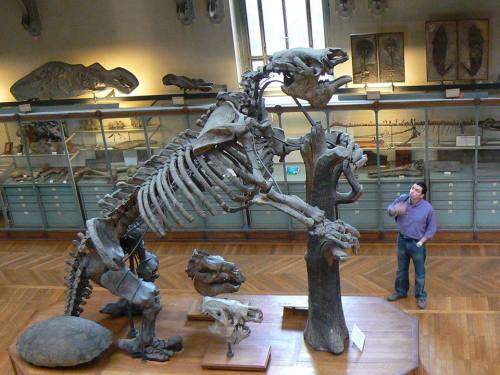
Behemoths of the ancient past…and future?
One thing that many known prehistoric creatures have in common - and the thing that most people find fearsome - is that a lot of them were huge. Everyone knows about the gigantism of T-rex, Diplodocus, and Megalodon. But there were also ground sloths the size of modern-day elephants, dragonflies the size of hawks, and cockroaches the size of domestic cats (!)
Keep reading


Climate change is not that complicated! (h/t)
-
 wild-special-interests reblogged this · 7 years ago
wild-special-interests reblogged this · 7 years ago -
 jessie-lou reblogged this · 7 years ago
jessie-lou reblogged this · 7 years ago -
 nemo-namikaze liked this · 7 years ago
nemo-namikaze liked this · 7 years ago -
 dinosatev reblogged this · 7 years ago
dinosatev reblogged this · 7 years ago -
 21121 liked this · 8 years ago
21121 liked this · 8 years ago -
 codename-birdie liked this · 8 years ago
codename-birdie liked this · 8 years ago -
 feline-fire liked this · 8 years ago
feline-fire liked this · 8 years ago -
 nuggiebug reblogged this · 8 years ago
nuggiebug reblogged this · 8 years ago -
 nuggiebug liked this · 8 years ago
nuggiebug liked this · 8 years ago -
 reyxian liked this · 8 years ago
reyxian liked this · 8 years ago -
 izaaur-deactivated liked this · 8 years ago
izaaur-deactivated liked this · 8 years ago -
 bobagrub reblogged this · 9 years ago
bobagrub reblogged this · 9 years ago -
 cookie-waffle liked this · 9 years ago
cookie-waffle liked this · 9 years ago -
 modernlies liked this · 9 years ago
modernlies liked this · 9 years ago -
 gridd1e liked this · 9 years ago
gridd1e liked this · 9 years ago -
 ninetailfox95 liked this · 9 years ago
ninetailfox95 liked this · 9 years ago -
 gallifreyshobbit liked this · 9 years ago
gallifreyshobbit liked this · 9 years ago -
 gallifreyshobbit reblogged this · 9 years ago
gallifreyshobbit reblogged this · 9 years ago -
 iaskedherforwater liked this · 9 years ago
iaskedherforwater liked this · 9 years ago -
 knockoutsapprentice reblogged this · 9 years ago
knockoutsapprentice reblogged this · 9 years ago -
 knockoutsapprentice liked this · 9 years ago
knockoutsapprentice liked this · 9 years ago -
 teolorenzo liked this · 9 years ago
teolorenzo liked this · 9 years ago -
 llamaslikesciencetoo reblogged this · 9 years ago
llamaslikesciencetoo reblogged this · 9 years ago -
 chrisbrannorling reblogged this · 9 years ago
chrisbrannorling reblogged this · 9 years ago -
 ostrichgod reblogged this · 9 years ago
ostrichgod reblogged this · 9 years ago -
 ostrichgod liked this · 9 years ago
ostrichgod liked this · 9 years ago -
 mryarra reblogged this · 9 years ago
mryarra reblogged this · 9 years ago -
 laryslarynx reblogged this · 9 years ago
laryslarynx reblogged this · 9 years ago -
 moriahbard reblogged this · 9 years ago
moriahbard reblogged this · 9 years ago -
 fortheunicornchild reblogged this · 9 years ago
fortheunicornchild reblogged this · 9 years ago -
 comicalsenses liked this · 9 years ago
comicalsenses liked this · 9 years ago -
 harocat reblogged this · 9 years ago
harocat reblogged this · 9 years ago -
 albertoesal liked this · 9 years ago
albertoesal liked this · 9 years ago -
 strigops reblogged this · 9 years ago
strigops reblogged this · 9 years ago -
 nadiasdiggindinoes reblogged this · 9 years ago
nadiasdiggindinoes reblogged this · 9 years ago -
 nadiasdiggindinoes liked this · 9 years ago
nadiasdiggindinoes liked this · 9 years ago -
 highway-666 liked this · 9 years ago
highway-666 liked this · 9 years ago -
 ka-barrodz liked this · 9 years ago
ka-barrodz liked this · 9 years ago -
 bubbletaro liked this · 9 years ago
bubbletaro liked this · 9 years ago -
 geekbeatking liked this · 9 years ago
geekbeatking liked this · 9 years ago
Mainly interested in ecology, but also the entirety of science.
179 posts